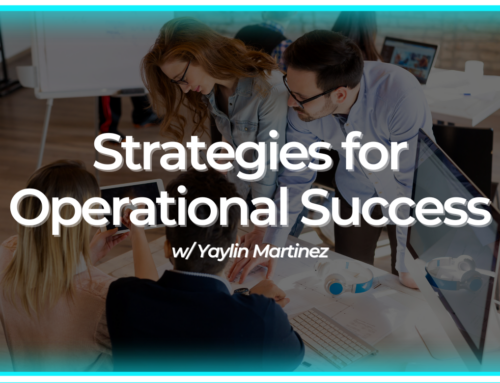Educational Video
I’m thrilled to share insights on navigating the onboarding process, based on a recent video by our head of operations, Yaylin Martinez, at our firm. Onboarding is a pivotal journey for new employees, setting the stage for a successful career within the organization. Let’s dive into the essentials of this process and why it’s so crucial!
The Importance of Onboarding
Onboarding is not just a formality; it’s a cornerstone of employee integration. This process is vital for helping new hires adjust to their roles and the workplace environment. First impressions matter, and a strong onboarding experience ensures that new employees feel welcomed and valued right from day one.
Research shows that effective onboarding can significantly enhance employee satisfaction and retention, which ultimately reduces turnover. When new hires understand the company culture, their responsibilities, and how they fit into the team, they are more likely to be engaged and committed to their roles.
Key Steps in the Onboarding Process
The onboarding process typically includes several essential steps:
1. Welcome Email: Before the new hire’s start date, they receive a welcome email. This email includes important information about what to expect on their first day, company policies, and any necessary paperwork. This initial communication sets a positive tone and prepares new employees for their journey ahead.
2. Orientation Session: On the first day, new hires attend an orientation session. During this time, they learn about the company’s mission, values, and culture. This is also a fantastic opportunity to meet colleagues, start building relationships, and feel part of the team from the outset.
3. Role-Specific Training: Following orientation, new employees participate in role-specific training. This training is tailored to equip them with the skills and knowledge they need to excel in their positions. It often includes hands-on activities, shadowing experienced team members, and plenty of opportunities to ask questions.
4. Mentorship: Many organizations assign a mentor or buddy to new hires during their initial weeks. This relationship is invaluable, providing guidance, support, and a friendly face to help navigate the new environment and integrate into the team.
Best Practices for Effective Onboarding
To ensure the onboarding process is as effective as possible, organizations should implement a few best practices:
– Regular Check-Ins: Frequent check-ins during the onboarding period can address any concerns and offer ongoing support. This ensures that new hires feel comfortable and have a channel to voice any issues they may encounter.
– Encouraging Open Communication: Fostering open communication is crucial in building a trusting relationship between new hires and their teams. When employees feel they can communicate freely, it enhances collaboration and boosts morale.
– Gathering Feedback: Finally, gathering feedback from new employees about their onboarding experience is essential for continuous improvement. Understanding what worked well and what could be enhanced helps refine the process for future hires.
In summary, effective onboarding is vital for ensuring new employees feel engaged and empowered from the start. It’s more than just paperwork and training; it’s about investing in their future and the company’s success. By creating a welcoming and supportive onboarding experience, organizations can lay the foundation for a thriving workforce.
Thank you for reading! We hope this guide helps you navigate your onboarding journey with confidence. If you have any questions or would like to share your onboarding experiences, feel free to leave a comment below.
We’ll see you next time!







